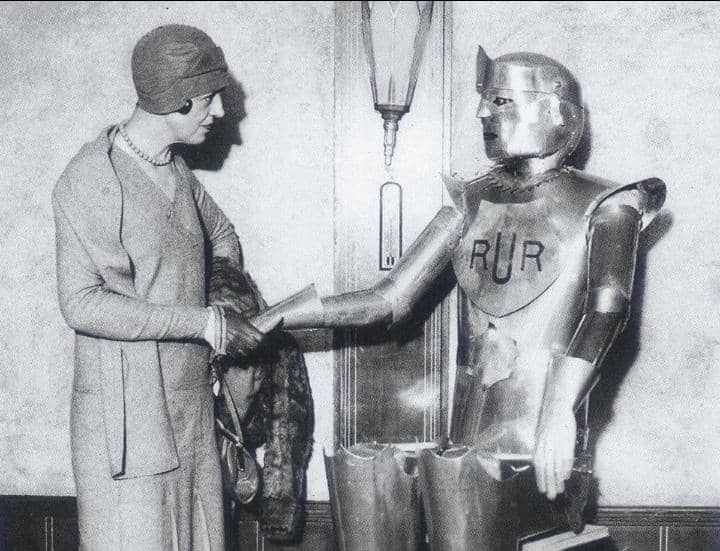The first robot created, Gakutensoku, emerged from the innovative mind of Japanese biologist Makoto Nishimura in 1928. Standing at 7 feet 8 inches tall, Gakutensoku was designed to mimic human movements and express emotions through a sophisticated air pressure mechanism.
Its name translates to “learning from the laws of nature,” reflecting Nishimura’s vision of a robot that celebrated both humanity and the natural world rather than serving as a mere laborer.
Gakutensoku made its debut at the Kyoto Grand Exposition, coinciding with the ascension of Emperor Showa. The robot captivated audiences with its ability to write Chinese characters, move its head and arms, and change facial expressions.
It featured a pen-shaped signal arrow in one hand and a lamp named Reikantō in the other. A bird-shaped automaton perched atop its head, which activated Gakutensoku’s expressions when it “sang,” further enhancing its interactive capabilities.
Despite its initial acclaim, Gakutensoku mysteriously disappeared during a tour in Germany in the 1930s, leaving behind no detailed records of its fate. This loss marked a significant gap in the history of robotics, but Gakutensoku’s influence persisted through its innovative design and philosophical underpinnings, which emphasized companionship over servitude.
In 2008, a modern replica of Gakutensoku was created by the Osaka Science Museum, standing at 10 feet 6 inches tall. This updated version utilized advanced computer-controlled pneumatic systems to replicate the original’s movements, showcasing how far robotics technology has come while honoring its historical roots.
The new Gakutensoku continues to inspire interest in robotics and serves as a testament to Nishimura’s pioneering spirit.
Gakutensoku’s legacy extends beyond its mechanical capabilities; it symbolizes a harmonious relationship between technology and nature.
As robotics continues to evolve, the principles embodied in Gakutensoku remind us that machines can be designed not just for utility but also for creativity and emotional connection, paving the way for future advancements in humanoid robotics.

